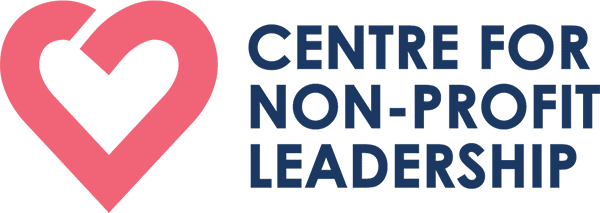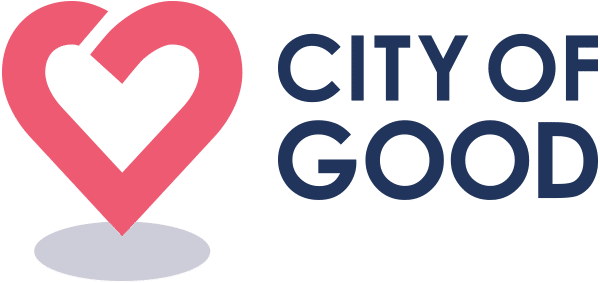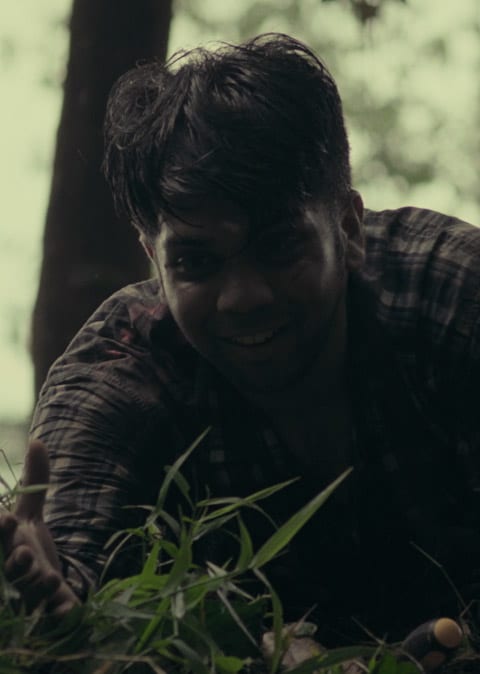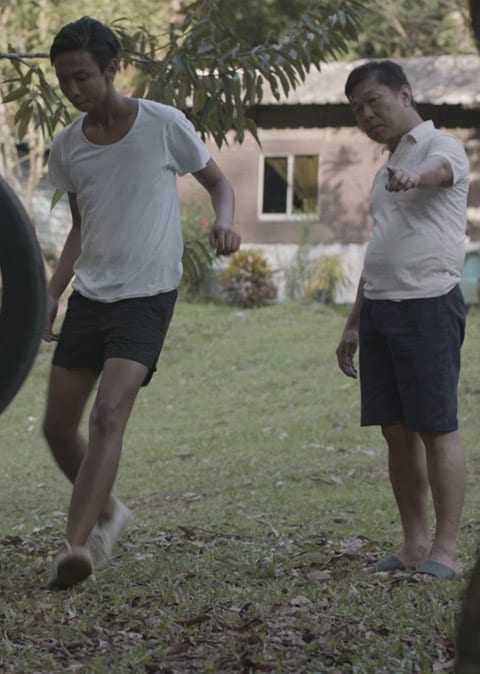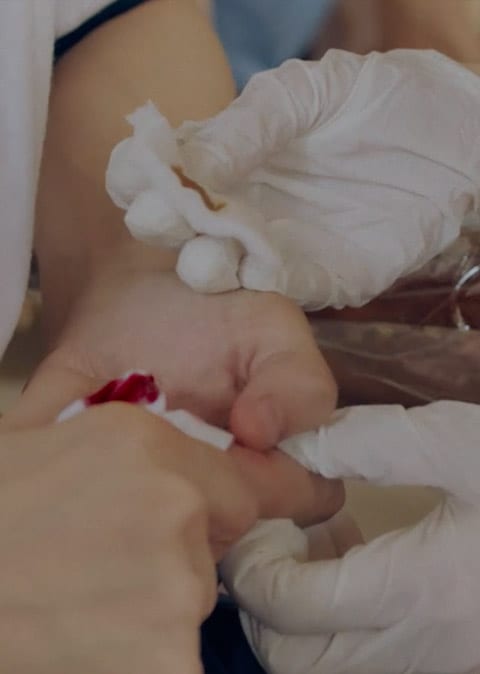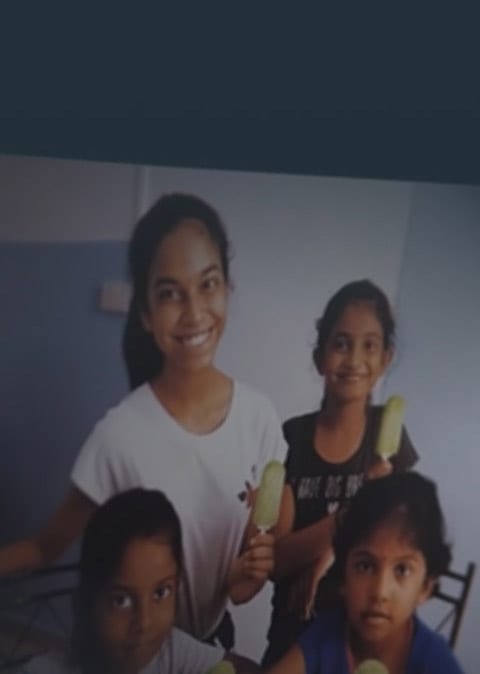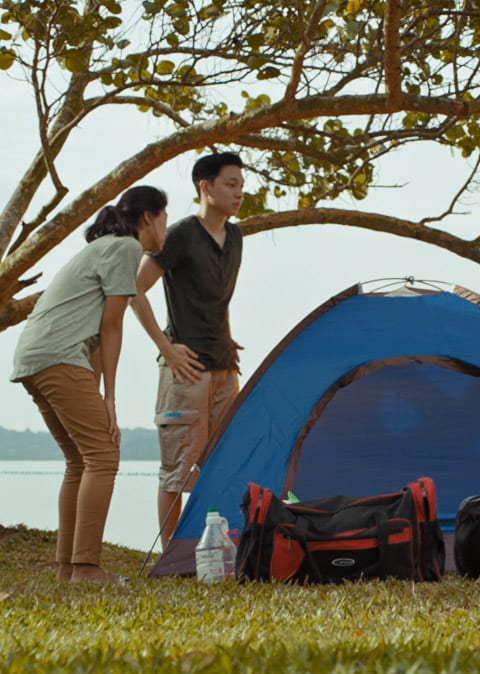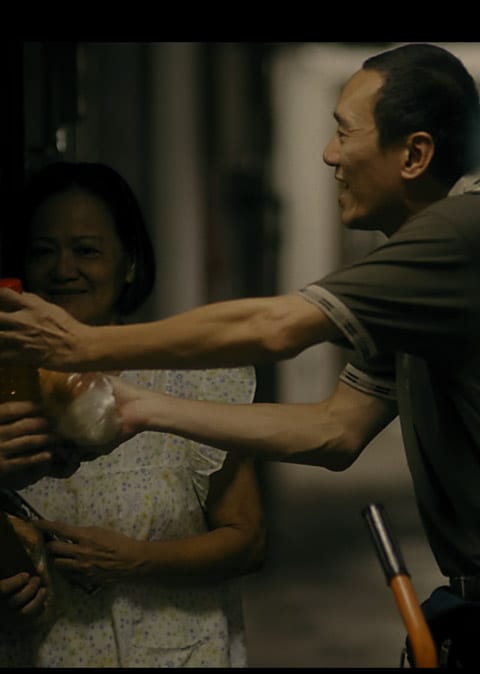Transcript
Grace Ann Chua [00:05]: A warm welcome is one of the most important aspects of the community journey, being the first introduction they have to your organisation. What should you consider when onboarding passionate people to your cause? Welcome to Crafting Communities, your companion in your journey to shape a better community experience for the people you care about. I’m your host and friend, Grace. Today I have Sparsh with me to share more about what he does at the BHP Singapore Community.
Grace Ann Chua [00:34]: Hi Sparsh. Welcome to Crafting Communities.
Sparsh Deep Singh [00:36]: Hi Grace. Thank you for having me here.
Grace Ann Chua [00:38]: So, tell us what is the BHP Singapore Community?
Sparsh Deep Singh [00:41]: Good question. There are two parts to it. First is what is BHP? Maybe for our listeners, I’ll quickly share. BHP is a national resources company. We extract, process, explore minerals with around 80,000 employees and contractors globally.
Grace Ann Chua [00:55]: It’s a lot of people.
Sparsh Deep Singh [00:56]: It’s a lot of people, a lot of resources, it’s a fantastic place to be in an organisation. But as an active partner in the communities where we operate, we share stewardship for the environment, support our local cultures and communities and help drive economic development. So, the Singapore community is actually a volunteer based employee resource group within BHP Singapore. The group was established in about 2015. And at any point in time, we have about 45 volunteers who are supporting initiatives, from charity organisations and social enterprises, including causes like children with chronic medical conditions, elderly, differently abled, migrant workers and financially disadvantaged. The beauty of it is it is all a volunteer run organisation. We don’t have anyone on a payroll in the company in Singapore to do that. And that’s what just makes it a great bottom-up initiative for our workforce within the community.
Grace Ann Chua [01:46]: You are the co-chair of the Singapore Community.
Sparsh Deep Singh [01:50]: I have the privilege of being the co-chair of that community for the last one and a half years. I’ve been a volunteer for the last seven years now. We, of course, have a management team, we have a structure around it. So, we have a leadership team of about six, supported by all the volunteers from the workforce.
Grace Ann Chua [02:03]: Awesome. In this episode today, we’re here to hear about your experiences onboarding the BHP Singapore Community. So, could you share a bit more about your role as a co-chair? And also, what do you do to onboard members in your community?
Sparsh Deep Singh [02:17]: So, as co-chair, my role is to support the team, wherever our volunteers feel passionate for a particular cause, they want to support certain initiatives. As I mentioned, these are bottom-up initiatives. Alot of them are our employees, so to support them through the journey is critical. As the management team here, as co-chair, we provide them all the guidance around what are the processes, the compliance or the vision for our team, then how do we take them on this journey, and enable the society, make our contribution to the society in the best way we can.
Grace Ann Chua [02:46]: How big is the BHP Singapore Community?
Sparsh Deep Singh [02:49]: As I mentioned, we have about 40 to 45 volunteers at any given point in time, which is actually one in five employees. So, it’s a pretty good uptake that way. But even then, we also do take part in employee engagement activities, right? So, we try to make sure that all of our employee workforce and actually our contractor workforce, our suppliers, our customers, our family members are also part of that journey with us. So, we make it very inclusive for all of them to participate in the initiatives where we can contribute back.
Grace Ann Chua [03:18]: You said about 50 people, right?
Sparsh Deep Singh [03:20]: 50 people plus, plus.
Grace Ann Chua [03:23]: Okay. And I mean, at some point in time, you’ve had to welcome them and onboard them into the community. So why is onboarding important for you?
Sparsh Deep Singh [03:29]: Onboarding is super important, right? That’s basically the first step for anyone to get into an organisation. So it’s the first step and the first impression that someone gets of your organisation. Especially in a volunteer experience, I feel as volunteers, it’s someone who’s not mandated to come and join you, it’s someone who wants to do it by passion, by value, or feels motivated to join a cause, and they’re just stepping into that room by themselves, right? They’re not being forced to come in. I think that’s what makes onboarding super important in this case, because if that step isn’t right, then that motivation can quickly drop down. Essentially, if that feels onerous, if this feels difficult, or the onerous process where people can actually come in and join your organisation, or there are 10 steps I need to get before I can actually contribute, then that motivation can quickly die down as well. So, onboarding becomes quite important.
Grace Ann Chua [04:18]: Yeah. As you rightly pointed out, they’re doing this in their free time, right? They’re volunteering here. So all the more, if it’s something that isn’t a good experience, why would they want to continue wasting that time or remaining in an unpleasant experience?
Sparsh Deep Singh [04:31]: Absolutely. And again, these are the causes they feel passionate about, right? So, if you think about, how did they get to learn about your organisation? So, for BHP Singapore Community, we do internal and external events. We have forums internally where we would go and present those initiatives, we would bring charity partners onto our forums to explain and spread awareness about their organisations with our internal workforce. We would also go external and do activities we can do with our community partners themselves. Now, given COVID scenarios, it has been a little difficult to go and volunteer. But when all of these activities happen, they create a social footprint where people learn about you, they hear the stories, they would like to come and connect with the organisation. Or they feel like, “Okay, I have free time where I feel passionately about a cause and I would like to contribute.” I think that’s where the journey starts for them right?
Sparsh Deep Singh [05:20]: Now, from that point, when someone tries to reach out to you and say, “Okay, Sparsh,” or any of our leadership team members, or any of the volunteers for that matter, “I would like to join, I love to hear about what you did over the last couple of months, I would want to be part of this organisation and support.” I think that’s the experience, right? So from there, how do we actually give them a meaningful experience so that they really want to be part of this organisation and what they have heard about is true, versus a difficult experience, which happens in certain scenarios, right? Especially around COVID, it has become even more difficult to give the right user experience for someone coming in, which makes it harder for someone to then get enrolled. Some people decide to leave The Singapore Community because they have other work commitments or some people don’t want to join in, then we try to create the experience for them to meet the community. They have fun along the way and they get onboarded and understand what TSC is.
Grace Ann Chua [06:10]: So taking it one step back, as you’re explaining earlier, if someone comes up to you and say, “Hey, Sparsh, I want to get involved.” What happens next?
Sparsh Deep Singh [06:17]: For us, what happens next is the very first step– the coffee conversation, the get-to-know you session.
Grace Ann Chua [06:23]: So, you do it one-on-one with everyone who reaches out?
Sparsh Deep Singh [06:28]: Absolutely. It’s one-on-one, either myself or any of the leadership team members would have a one-on-one conversation with that prospective volunteer and get to know them better. It’s super important to understand their why– why they want to be part of this organisation, and then to also set the expectation on behalf of The Singapore Community. What do we expect from our volunteers when they join in? We don’t want to create an organisation where we have a lot of people but very few active members in it. And knowing their why also helps. Is that something we can support them on? If they feel passionate for a cause or would like to support a certain organisation, or feel for a certain initiative, how can we support them?
Sparsh Deep Singh [07:07]: So, I think that’s a very important step, 30 to 45-minute conversation, to get to know them better and for them to get to know TSC better. We have a framework; we have a structure around how we have our initiatives going on. Some are more focused on community activities with our charity partners, some are focused on physical and mental wellness, some are focused on employee engagement, and so on. So, explaining that to them, understanding their why, why would they like to participate and what is the role that they can play in the organisation is the setting stone for that conversation. So first step: a coffee conversation, virtual in the last couple of years, and then take the next step from there. You know, sometimes it does happen that the volunteer feels like, “Okay, I may not be wanting to do that right now given what is the expectation from the TSC.” But a lot of times, they’re like, “Okay, thank you, thank you for being upfront about what the expectation is. I would like to contribute.” Then we take them to the next step– what is our plan for the whole year? We have a monthly routine where all our volunteers come together and connect for an hour. So, bring them on board, introduce them to that bigger community of people, and then get them to choose their own journey, which are the initiatives they would like to support and participate in, or activities they would like to volunteer for.
Grace Ann Chua [08:14]: So in that first conversation, the coffee conversation, do you share that, okay, this commitment to join has a certain duration or there are requirements like you have to be involved in X number of projects in your time here? What are the specific expectations that are being communicated to them?
Sparsh Deep Singh [08:29]: Well, one of the simple expectations we have and we communicate is for them to lead or support at least one initiative in the calendar year, essentially. What that means is no freeriders, simply. So, we would want everyone to own a piece in this journey. It’s a bottom up volunteer led organisation, right? So, we do as many initiatives as possible, but that’s all dependent on how many volunteers we can have actively leading. So that’s sort of a KPI that we put in, that everyone does and supports at least one initiative. So, we would have a central virtual board where all the initiatives are listed and there are slots available on who does what, et cetera, for people as they go at the beginning of every year, and put their names against what they would like to contribute. And then certainly, that KPI setting sort of happens in that setup, where the new volunteers also get the opportunity to choose on what kind of initiative they would like to support in, either from that list or bring up something else. If they really feel passionate about something, then they’re always welcome to bring something new on board as well. And the leadership team then decides to see how we can support that.
Grace Ann Chua [09:29]: That’s a lot of initiatives you’re mentioning. You said there’s about 50 people, right? So, it’s not 50 initiatives?
Sparsh Deep Singh [09:34]: It’s not 50 initiatives. Absolutely not, because certain initiatives do require more people. It’s not like one person is running one initiative. You would have teams of five to seven at any point in time. We recently did what is called an urban farm opening with Project Dignity. And we had about a team of four working on it, which was a virtual opening. We couldn’t really be on the ground, but it was an urban farm, which was set up at the Project Dignity premises. Similarly, when you think about an event where you want to go and do Lo Hei with some charity organisations, especially around the Chinese New Year period – we went and did something with AWWA, this time around it was smaller, but it would actually take up the entire 300-400 workforce to go and spend some time with the elderly in that space. So, depends from initiative to initiative. Sometimes it’s a lot more laborious job and we would always have a team of five to seven working on it, versus some initiative which could be done by one or two people.
Grace Ann Chua [10:27]: It’s also good. It gives an opportunity for people within the community to bond over working together on certain projects.
Sparsh Deep Singh [10:33]: This is super important for anyone’s physical and mental wellness as well, right? This is something else from their day job. The feedback that we get is they do enjoy connecting with people from the workplace, but working on other passionate initiatives. So, they get to connect with people from the different teams, they get to work on initiatives which are not their day-to-day work life related, and also experience philanthropy as part of it because you get to meet the community, get to exchange ideas, you get to create new ways of doing such initiatives every time as well.
Grace Ann Chua [11:03]: One of the things I love that you mentioned earlier was that the expectations are very clear. Everyone who joins the community has to either lead or support one activity or one project, right? And if someone who is interested in joining decides they don’t take that up, then they don’t join the community, I suppose. Is that a hard conversation for you to have?
Sparsh Deep Singh [11:21]: So, we are very clear from a TSC standpoint that we will create an environment where the most passionate people only are basically joining this team, right? We want to make sure that the right people are there. It’s hard in the beginning for any organisation for that matter, simply because if you won’t have the critical mass of volunteers, you will struggle to ramp up your initiative. But then once you have the expectation, it also sets a lot of respect for the volunteers to know upfront on what is expected of them. And that helps us to create that setting for the volunteers. So it used to be hard. Now, of course, I think that just enables in a professional environment, before signing up knowing what are the terms and conditions. It’s not a 10-page form and you say, “I signed up for…, I know the terms and conditions.” It’s literally having a conversation. “That’s what you’re signing up for. Are you ready for it or not?” If someone is not, then you actually respect it. Because you want to make sure that our first and foremost duties are towards the communities we support. We don’t want them to suffer in any shape or form, right? And then we want to make sure that we get the right volunteers to support such initiatives.
Grace Ann Chua [12:21]: And I’m glad to hear that it really pays off. Now you have a community of active invested passionate volunteers that are contributing to this one, as opposed to having maybe half the people who are very active, but then half the people who don’t pull their weight or are inactive, right? And then you have all these issues. It’s like, the more active people are looking at the inactive people, it’s just like, “Oh, what are you guys doing here? You’re not really doing anything.”
Sparsh Deep Singh [12:42]: That absolutely happens. And I think that’s where the leadership team, again, plays a good role to navigate and understand the challenges of some of the inactive participants and be open to what’s causing that. Because everyone who joins is active on day one and wants to be part of that organisation. So, there are certainly volunteers who want to take a six-month break. They will take a break and say, “We would come back after six months. We would like to be connected, we would like to be associated, but my workload is not allowing for that to happen.” And that’s okay. The leadership team then just steps in and supports the resourcing of a certain initiative, and creates that space for our volunteers to make that happen as well. It’s actually a good tip for someone to look at how many active volunteers do you have, and learn how to onboard them – what has been different for them? And then use that to onboard new people, essentially.
Grace Ann Chua [13:30]: So getting feedback from people who’ve already been on-boarded and asking them what was good about that onboarding experience.
Sparsh Deep Singh [13:36]: Correct. And interesting, right? Thanks to this session today, I did connect with some of the volunteers who came on board in the last three to four months, and reached out to them to connect how was their onboarding, because it has been very different because of COVID. And honestly speaking, we didn’t get it right for everyone. While they are onboarded, while they’re active, they are running initiatives, they are super excited about their participation and work. But they certainly mentioned about a few areas of improvement we can work on because they are struggling to now get the social cohesion with the bigger community. While working on their own initiative, they are sometimes lost in how the processes work. It’s like, okay, let’s take that feedback on board. And before we bring in new volunteers, we like to make sure that we are addressing that as well.
Grace Ann Chua [14:16]: Yeah, it’s very good to hear that you’re checking in with the new volunteers as well. In one of the previous episodes, Shaily was just emphasizing the importance of creating the opportunities for checking in with the new joiners, because sometimes you may not have the courage or the comfort to just go out and give this direct feedback. But as a leader, when you go to your new team members or new joiners and be like, “Hey, how’s the experience been? Are there any areas of improvement?” That vulnerability of you stepping forward to ask for feedback creates that environment where they feel comfortable enough to share their honest feedback with you.
Sparsh Deep Singh [14:45]: Yes. And that’s the most important gift that you can receive for your onboarding process or any process when you’re running an NGO, or an organisation for that matter. The reason being, the people who are leading it are super passionate about the cause that they can always have a bias in that what they’re doing is right. But the new volunteers always bring in fresh perspectives. They would have experienced something in another organisation in the past as well, or they have certain expectations from their side. So, if you actually have that conversation, like you mentioned Shaily said, then it’s super important. And the role of the leadership then comes into play to address it, to learn from it, to see what was the gap and actually address it. Take that feedback and see what we can do differently about it to create a better experience for new volunteers.
Grace Ann Chua [15:27]: Thanks, Sparsh. And how have you seen COVID affect the way that you onboard volunteers?
Sparsh Deep Singh [15:34]: Well, COVID has had an impact on anything else for that matter. I think there are two key reasons. One is the reach to the volunteers – to show the work, to get them to experience the organisation has been difficult, because there’s not a lot of physical activities happening. What that meant was not a lot of show and tell is happening. Like you can’t have The Singapore Community out there doing activities with a lot of volunteers together, where some new people also join in and they learn about the organisation, gain a great experience and then come back and want to join. So, that has been a challenge. Second challenge, as I mentioned slightly before as well, the people who join in – and this was the recent feedback that we got – their ability to meet the community of other volunteers within TSC, around 45. When was the last time these 50 people came together? Two years back. We are coming together virtually or we are coming together in our smaller groups doing the initiatives. Still, the community is going strong, but that physical proximity has caused some of the challenges.
Sparsh Deep Singh [16:30]: We’re very much looking forward to now the reopening again from the social measures perspective, and start to bring in smaller groups of people together through lunches, through connections. We used to have this physical space in the office, a big wall with all our ideas up there, and people would come together once a month in that room to discuss the activity we’re looking forward to sort of bring that all together to create that space. That, of course, is the world that COVID created for the volunteers.
Grace Ann Chua [16:56]: What about any silver linings? What have been some of the good things that you’ve seen come out of navigating onboarding the community through COVID?
Sparsh Deep Singh [17:06]: The silver lining has been around the appreciation of work for every volunteer now that – I think many of us have realised the importance of doing good for the society, many of us have realised the importance of kindness, the importance of giving back, and a lot of things [we] used to take for granted pre-COVID. That has changed. What it also means is are getting more volunteers from that standpoint. We’re getting some senior leaders of the organisation to come and support the initiative, which wasn’t there to an extent in the pre-COVID days. There were leaders, of course, coming in and supporting, but I think COVID has created that sense of appreciation, that reflection for people. And then there are some really passionate people who have stood up and said they want to be supporting the causes. And [there are] a lot of new creative ways [in doing] the initiatives. There are art painting exhibitions happening which are done by our employee leaders. And then we are auctioning those paintings and the funds are going to a certain charity. There are virtual trivias happening and funds are being raised and going to the charities. We are doing a lot of exercise challenges. These days, a lot of new volunteers came and said they would like to do something like that, which is a low barrier to entry, but doing some 15 minutes of exercise and a bento box goes to the frontline health workers. So, that has been the silver lining. A lot of new initiatives started to kick off, new ideas came in, versus the classic model of going and volunteering with an organisation in physical premises.
Grace Ann Chua [18:28]: That’s great! I’m so encouraged to hear that COVID has attracted more colleagues to join your volunteering group and that they see value in giving back in this way. My last question for you, Sparsh, what is one tip you would like to give our listeners today about onboarding?
Sparsh Deep Singh [18:41]: Well, the first thing we should do is go back and look at your active volunteers from the last six months and ask about their onboarding experience. So, just do a reach out, right? If you can have a one-on-one coffee catchup or meet them in smaller groups, just don’t do it over a WhatsApp message. Try to connect with them and hear from them because that will give you a lot of insights into what any of you would have done right or wrong, either to enhance on the good experiences you have provided or to build on what have been a bit of a gap from their experience. That would give you a pretty good list of two or three items, not more than that, two or three items that you can then focus on – [about] onboarding your new volunteers in a more effective way and giving them the experiences you promised.
Grace Ann Chua [19:24]: Thank you, Sparsh, that was so helpful, practical and personalised.
Sparsh Deep Singh [19:28]: Thank you so much. Really appreciate you inviting us here, Grace, and thank you to NVPC and this organisation to help us think more, and actually, through this community, create a space for us to collect more ideas in which I can take back to The Singapore Community as well and improve our own processes, and celebrate with our own set of volunteers. Thank you so much.
Grace Ann Chua [19:46]: Well that marks the end of our dive into onboarding experiences. But this is only just the start of the community journey! Tune in next week as we delve deeper into the next step: leadership succession. See you there!
